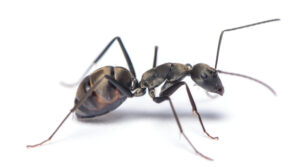The Secret Life of Ants: Understanding Behavior for Better Control
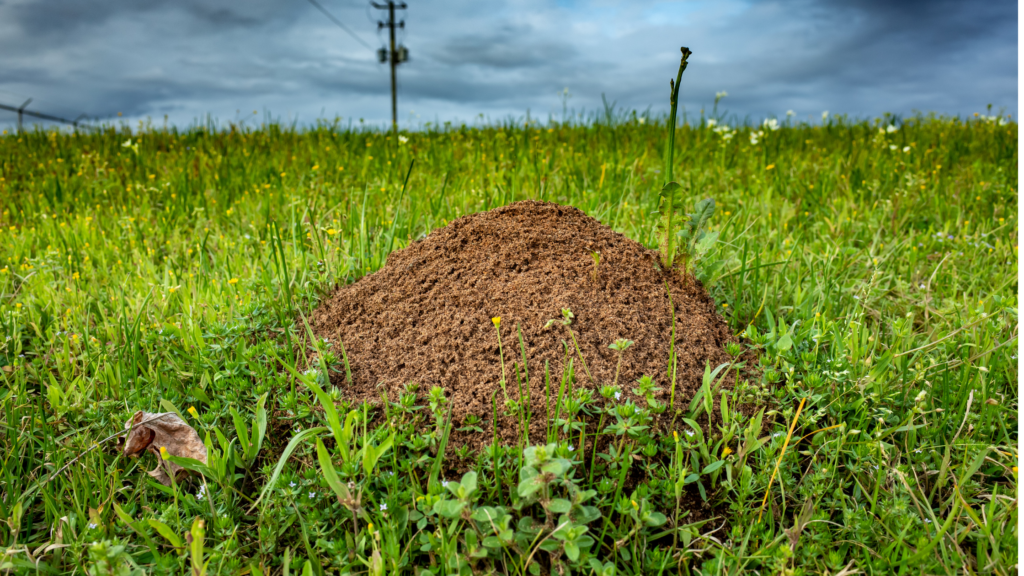
Ant Species Found in Massachusetts
Ants are among the most common household pests; understanding their behavior is key to effective control, especially during spring and summer when activity is the highest. By delving into ants’ secret lives to understand their biology and behavior, we, along with homeowners and businesses, can achieve better control success from this inevitable pest.
Several ant species are found in the Northeast. The most common varieties we encounter in Massachusetts are as follows:
Acrobat Ant
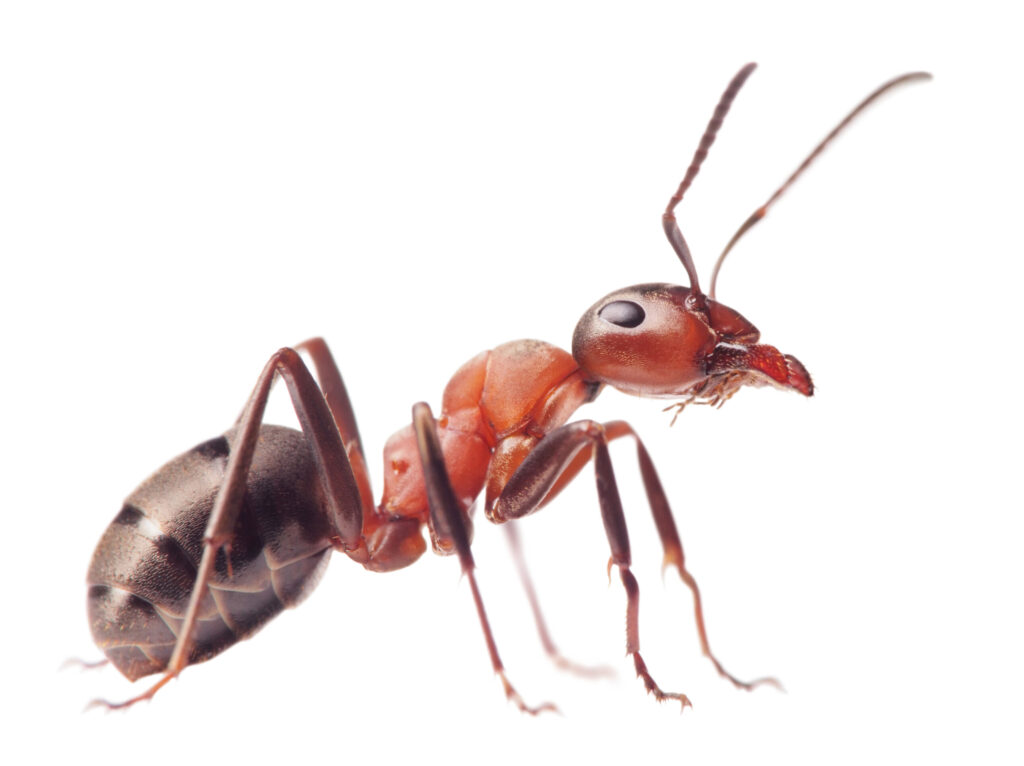
Acrobat ants (Crematogaster spp.) are named for their unique behavior of raising their abdomen over their thorax and head when disturbed, resembling an acrobat performing a balancing act. They are relatively small ants, typically ranging from 2 to 4 millimeters in length.
These ants are commonly found nesting in moist or decaying wood but can also nest in wall voids, insulation, or under stones. Indoors, they may be found in areas with moisture problems, such as around sinks, bathtubs, and leaky pipes. They are attracted to sweets and proteins, so they may forage in kitchens and pantries.
Acrobat ants are known to protect aphids and other honeydew-producing insects, which they “milk” for their sugary secretions. This behavior can sometimes lead them to infest ornamental plants or garden areas with aphids.
Carpenter Ant
Carpenter ants (Camponotus spp.) are among the largest ants in the United States, ranging from about 6 to 13 millimeters in length. They are named for their habit of excavating galleries in wood to create nesting sites, although they do not eat wood like termites.
Carpenter ants are usually black, but some species may have reddish or yellowish coloration. They have a single, prominent node between their thorax and abdomen, which helps distinguish them from other ant species.
These ants are primarily nocturnal and are most active during the night. They forage for food, which can include both sugary substances and proteins. Carpenter ants are known for their ability to travel long distances in search of food, often following well-defined trails.
Carpenter ants nest in moist, dry wood, including trees, logs, and buildings. They prefer wood that has been softened by moisture or decay. In homes, they are commonly found in areas with water damage, such as around sinks, bathtubs, and roof leaks.
While carpenter ants do not eat wood, their nesting habits can cause significant damage to structures over time. They excavate galleries for nesting, which can weaken the integrity of the wood.
Little Black Ant
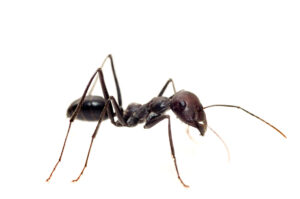
Little Black Ants (Monomorium minimum) are a common household pest. They are small ants, typically measuring 1.5 to 2.5 millimeters in length.
These ants are usually black, and their colonies can vary in size from a few dozen to several thousand workers. Little black ants are known for their scavenging behavior and are attracted to various foods, including sweets, meats, and greasy foods.
Little black ants often nest outdoors under rocks, logs, or the soil. However, they can also establish nests indoors in wall voids, insulation, or under carpets. They are particularly fond of nesting in warm, humid areas, such as kitchens and bathrooms.
While little black ants are not known to cause structural damage like carpenter ants, they can be a nuisance when they invade homes in search of food. Regular cleaning and proper food storage are key to preventing infestations of these tiny pests.
Odorous House Ant
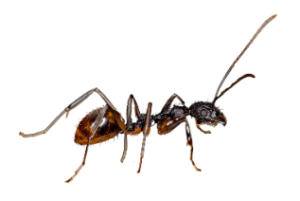
Odorous house ants (Tapinoma sessile) are small ants known for the coconut-like odor they emit when crushed. They typically range from 1.5 to 3.2 millimeters in length.
These ants are attracted to sweets and can also feed on meats and greasy foods. They forage along well-defined trails, often entering homes in search of food. Odorous house ants are opportunistic feeders and can establish indoor and outdoor nests.
Odorous house ants are commonly found indoors in kitchens and bathrooms, especially near sources of moisture. They are known to nest in wall voids, under floors, and in insulation. Outdoors, they nest in areas with soil, such as under rocks or logs.
Pavement Ant
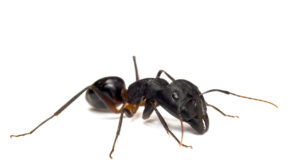
Pavement ants (Tetramorium caespitum) are common in the United States. They are small ants, typically measuring around 2.5 to 3 millimeters in length.
These ants are named for their habit of nesting under pavement, sidewalks, and driveways. They are also commonly found in gardens, under stones, and other outdoor areas. Pavement ants are known to establish nests indoors as well, particularly in walls, insulation, and under floors.
Pavement ants are omnivorous and feed on various foods, including sweets, meats, and greasy foods. They are known to forage in trails, making them a common sight in kitchens and pantries.
Communication and Foraging
Understanding ants’ communication and foraging behaviors is crucial for effective pest control. Ants use pheromones to communicate with each other, laying down scent trails to food sources or new nesting sites. This behavior allows ants to coordinate their foraging activities and locate resources efficiently.
Disrupting these scent trails is key to effective control. You can deter ants from accessing these areas by identifying and eliminating the source of the pheromone trail, such as food spills or entry points into buildings.
Additionally, understanding foraging patterns helps in targeting control efforts. Placing baits or treatments along ant trails or near nest sites increases the likelihood of ants encountering and ingesting these control methods.
Different ant species have varying preferences in food sources, so using baits that are attractive to the target species is important. This targeted approach can lead to more successful control outcomes with minimal impact on non-target species and the environment.
Ant Life Cycle
Understanding the life cycles of ants is essential for effective pest control. Ants undergo complete metamorphosis, progressing through egg, larva, pupa, and adult stages. Targeting ants at the right life stages can significantly improve control outcomes.
For example, targeting ant colonies during the egg or larval stages can disrupt their development and reduce the population. This approach is particularly effective against species with a relatively short developmental period, such as odorous house ants and pavement ants.
Timing is crucial when implementing pest control measures. Foraging activity and colony development vary depending on the ant species and environmental conditions. Monitoring activity and understanding their life cycles can help determine the best time to apply control methods.
Spring and summer are peak seasons for ant activity, making them ideal times for targeted control efforts. However, indoor infestations can occur year-round, so it’s important to remain vigilant and address ant problems as soon as they are detected.
Role of the Queen
The queen plays a vital role in ant colonies; understanding her role is crucial for effective pest control. The queen’s primary function is to reproduce, laying eggs to maintain and grow the colony. The queen can live for several years in some species, continuously producing offspring.
For pest control, targeting the queen can be challenging as she is often well-protected within the nest. However, eliminating the queen can effectively disrupt the colony’s reproductive cycle and reduce its ability to expand. This approach is particularly effective for long-term control, as it can lead to the eventual collapse of the colony.
Some ant species have multiple queens, known as polygyny, which can complicate control efforts. In these cases, eliminating all the queens is necessary to control the colony effectively.
Overall, understanding the role of the queen in ant colonies is essential for developing effective pest control strategies. By targeting the queen, pest control efforts can more effectively disrupt the colony’s reproductive cycle and reduce its impact.
The Nest
Understanding ant nesting behavior is crucial for effective pest control, both indoors and outdoors. Ants nest in various locations, including soil, wood, and within structures. New generation control products leverage ants’ behavior to bring the product back to the nest, eliminating the need for technicians to The presence of ant hills or disturbed soil can identify these nests rocks, or in decaying wood, often identifiable by ant hills or disturbed soil. Indoor nests, on the other hand, can be more challenging, as ants can nest in wall voids, insulation, or under floors. Signs of indoor nesting include ant trails leading to entry points, such as cracks or crevices in walls or floors. By using control products that exploit ants’ behavior and biology, we can effectively target the entire colony without having to physically find every nest. This approach helps reduce ant populations and prevent future infestations.
Ready to Take Your Pest Control Strategy to the Next Level?
Learn how Ecologic Entomology can seamlessly integrate IPM into your home or business’s pest management strategy for effective control.
Schedule a no-cost consultation for your business or request a free estimate for your home and experience the Ecologic Entomology difference: innovative pest management.

